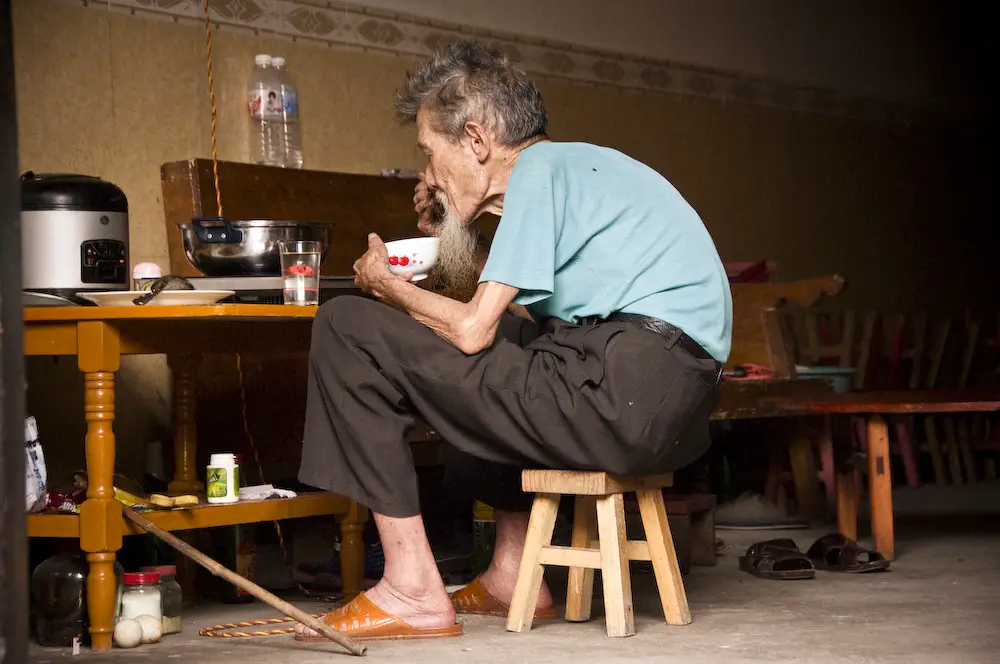La Scheuermann's disease or juvenile kyphosis is a deformity of ossification points affecting young boys in general. It is benign in appearance, but in the absence of treatment (or treated late), it can become very disabling. In some cases, it can also leave sequelae in adulthood. This is the subject of this article: aftermath of the Scheuermann's disease in adults.
Focus on Scheuermann's disease
Also called osteochondrosis, this bone condition designates a crowding of the lower thoracic spines and Lumbar spine high. It is an anomaly that occurs during vertebral growth and is manifested by a curve observed in the thoracic spine.
The lower spinal region fractures due to a lack of nutrients or due to a disorder and infection that affects bone growth. So, instead of keeping their rectangular shape, the vertebrae become triangles and protrude from their usual place forming a bump.
The dorsal hump is between 40° and 50° and can cause injury to the back muscles, back stiffness and slow motor skills.
Although it is sometimes benign, it should ideally be treated during youth to prevent a physical handicap from setting in.
This can be treated quickly by:
- an orthosis;
- physiotherapy (physiotherapy);
- treatment of related diseases;
- surgery.
According to an MRI examination, the deformities on the lumbar and thoracic spines are summarized by a diagram.
- There is a flaky appearance at the level of the first vertebra of the thoracic region.
- Afterwards, we see a disc narrowing and an intraspongy herniation on the second vertebra, then a wedge-shaped appearance greater than 5° on the third.
- There are also marginal hernias through the vertebral endplates.
If you want to know more about Scheuermann's disease, you can see this article.
What are the sequelae of Scheuermann's kyphosis in adults?
Sequelae after treatment
When the patient is still an adolescent, his skeleton is immature. At this point, the Scheuermann's disease treatment can still be simple and the exercises to practice are less complex. However, he may also be required to practice self-aggrandizement exercises and long-term stretching. This initiative is recommended by a rehabilitation professional to prevent kyphosis from causing discomfort.
Wearing a corset to correct the deformity at this time is still effective. However, a loss of correction may occur after stopping the brace.
In the long term, if the curve still exceeds 70°, surgery must be done to repair the vertebrae. But after that, you still need to have a few physiotherapy sessions to recover from the operation.
In adult patients, wearing a corrective orthosis is no longer useful and intensive sporting activities should be avoided. Also, they go straight through surgery for posterior correction and fusion.
Lumbar disc herniation and low back pain: a frequent sequela of Scheuermann's kyphosis in adults
La illness of Scheuermann may promote slipping of the intervertebral disc. Indeed, the discs of the spinal column protrude those of the vertebral inters on the lumbar part. The nerve roots will then be compressed which causes pain in the lower back. It's a frequent sequelae of Scheuermann's kyphosis in adults.
To learn more about herniated disc, see the following article.
The pain can become intense due to compression of the thoracic, lumbar nerves and can radiate to the lower limbs of the body (type sciatica ou cruralgia).
In 8% of cases, a herniated disc evolves towards the cervical part, then giving rise to myalgia or even paralysis.
Spinal cord injury and neurological disorder
Herniated discs by compressing the nerve roots also cause spinal cord injury or myelopathy.
The spinal cord, being the largest nerve, has pairs of branches at each level to overcome the spinal nerves. The spinal cord communicates with the brain and nervous system of the rest of the body to transmit a nerve impulse up and down. It is therefore responsible for motor, sensory and physiological control.
If the Scheuermann's disease is not treated properly, it may in some cases cause a lesion in part of the spinal cord which will be responsible for neurological dysfunction.
Myalgia: another sequela of osteochondrosis in adults
Scheuermann's disease injures the back ligaments, cramping the muscles that support the spine. This phenomenon causes a lumbar sprain and subsequently leads to back stiffness causing slight pain in the back and lumbar region.
This suffering accumulates in the morning and generally improves after a few sessions of physiotherapy, or drug treatment.


